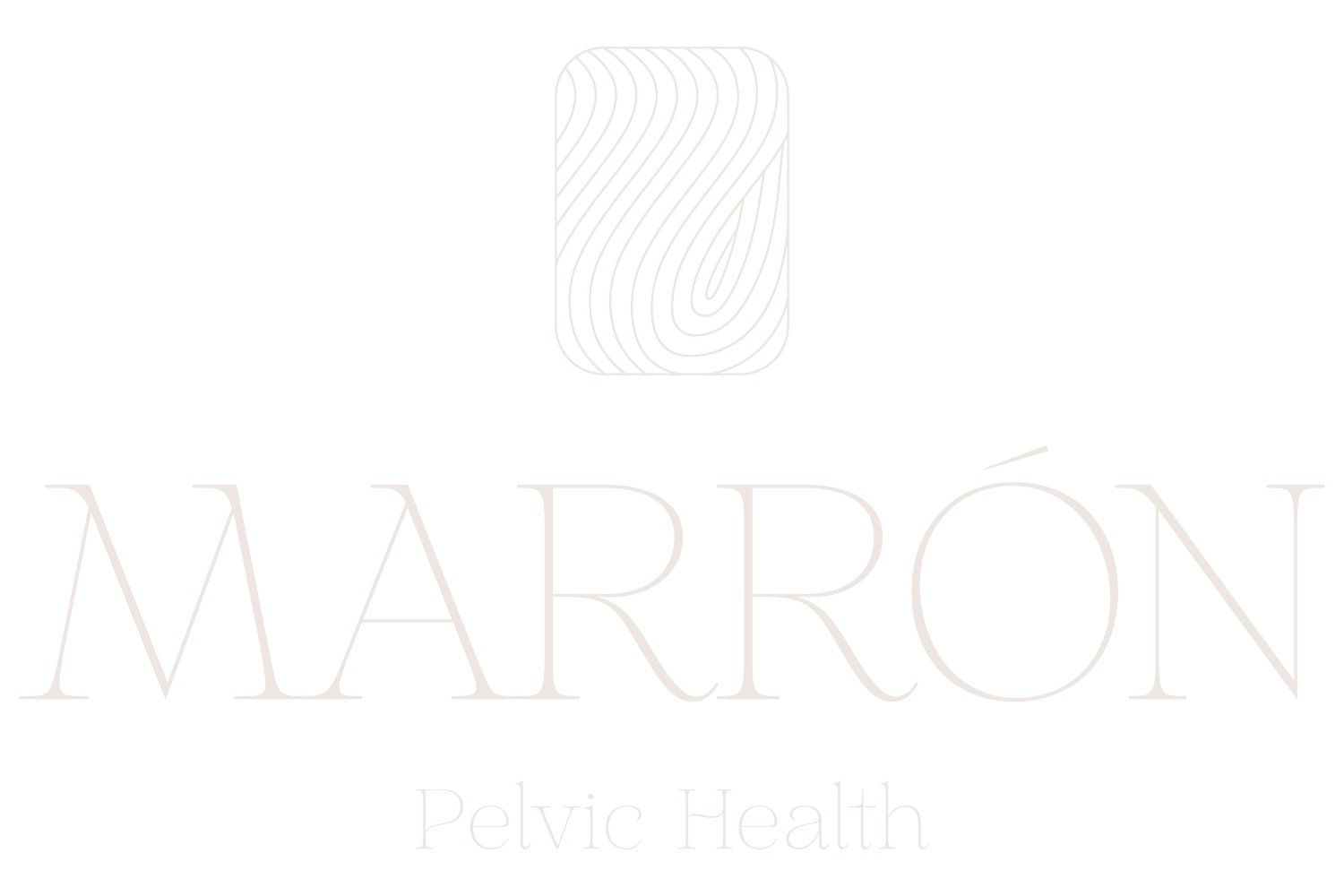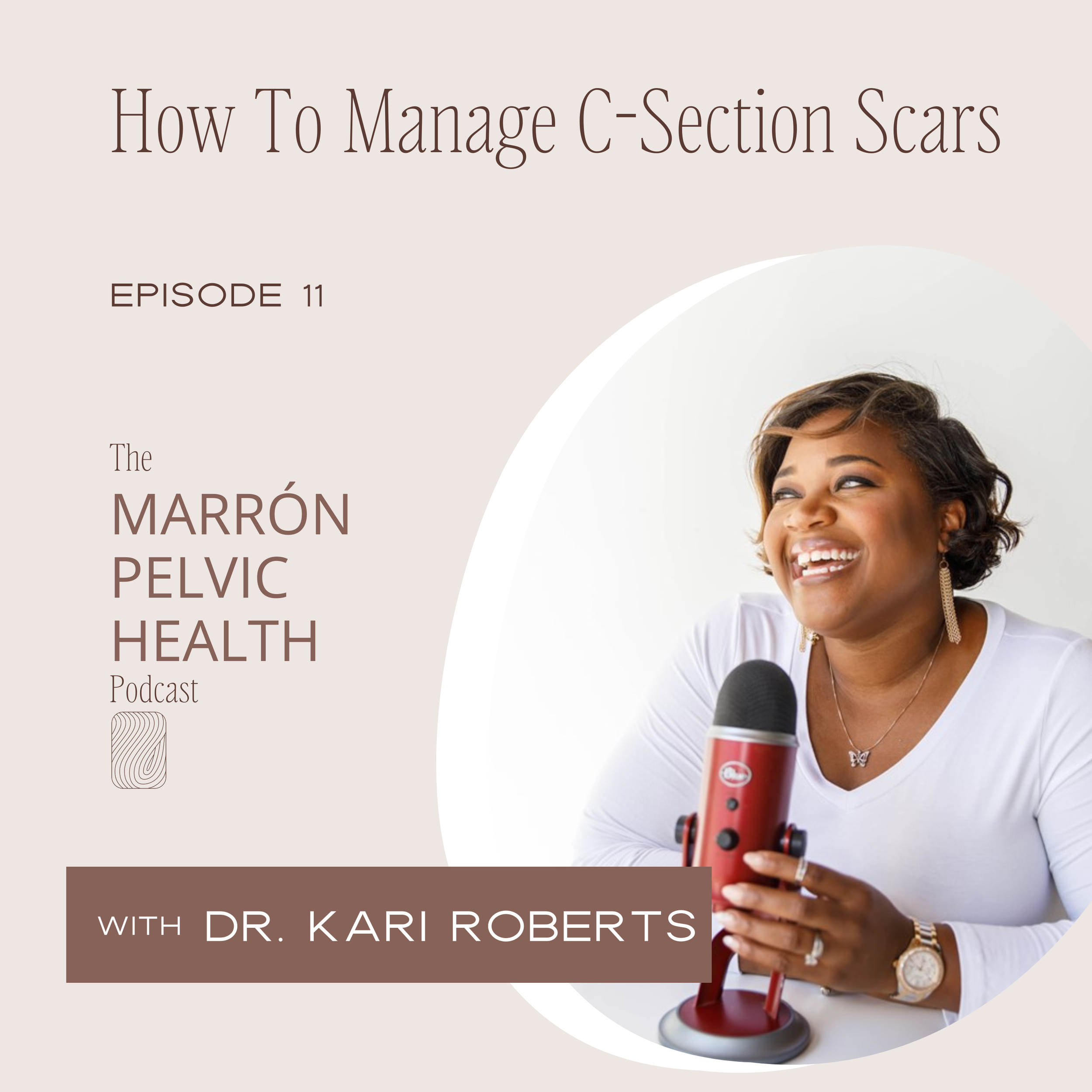How to Manage C-Section Scars - Episode 11
In this episode, I share why c-sections are so unique how they heal, and some common side effects that come from that surgery. I also share 3 tips to help women manage their C-Section scars.
(This can help any scar around the body.)
-
[00:04] Dr. Kari: Welcome to the Morone Pelvic Health Podcast. Hi, I'm your host, Dr. Kari Roberts.
[00:09] Dr. Kari: On this show, we will be discussing a variety of things regarding your pelvic health.
[00:13] Dr. Kari: These conversations will be a mix of education, personal experiences, and a blend of tips you can apply to have a healthier pelvis. The goal of this show is to normalize conversations around pelvic health and help women stop suffering in silence.
[00:33] Dr. Kari: Let's jump into the things that you can do to overcome your C section concerns, issues. Fill in the blank. I have not had a C section, so I can't say what it feels like. But you do. That's what I'm saying. You can fill in the blank. And I've worked with dozens of women that have had C sections and issues and concerns, and so I just kind of wanted to take a couple of minutes today and talk through that process. If you haven't checked it out, check out last week's episode, because I went into detail about what are the seven layers of tissue that are impacted from a C section scar. And so today we're going to talk about how to overcome your concerns. So usually with any scar in our body, your body lays down scar tissue, which there is skin tissue, there's fascia tissue, there's fat tissue, there's muscle tissue, there's bone tissue, there's all different sorts of tissues in our body. Well, scar tissue is blank. It is generic tissue that gets laid down wherever there's some sort of injury. And so when your body lays down scar tissue, it goes through a remodeling process to become whatever tissue it needs to be. So if you have an injury to your muscle, you will lay down scar tissue. But then as that muscle continues to work and heal, your body will reorganize it to be muscle tissue. If you damage your skin, your body will remodel that tissue to make it skin and so on and so forth. As your body is going through that remodeling process, that tissue that's laid down is usually, since it's generic and it could turn into any kind of tissue, it's usually taut, and if it's not properly manipulated, it can heal very tight. And so when you've got an area like the abdominal area that has tons of blood flow, the good thing is things with tons of blood flow heal fast because there's a lot of blood flow. But the side effect is, since the abdomen has so much blood flow, it's kind of predisposed to getting your body to lay down a lot of scar tissue. And a lot of scar tissue can become adhesions, which is when those layers of tissues where you've got skin and fat and connective tissue fascia kind of back to back, instead of them sliding back and forth, they can get stuck, and then they have to move all in one piece. And that's not very comfortable because that's not how it was before you had the injury. And so when that scar can adhere, you can get other issues. Also when that scar adheres, sometimes you can develop in the abdomen, what people call is that shelf, which is like underneath or at the scar, it's very taut. It's not stretchy and not pliable, but supple. It's not supple like skin. You can pull on the skin behind your hand. You can pull on the skin on your arm and your leg. You can pull on the skin around your belly, your waist area, and it's got give. Well, sometimes scars, when they heal, you lose that give, you lose that suppleness and it could be taut. So with that C section, if that scars heals tight and you get that really taut skin, then it's almost like below at the scar, below the scar is really stiff. And then that extra weight or the extra skin that was created while you were growing your baby can kind of hang over that scar. And that's kind of known as that C section shelf where it's like below it's kind of stiff and above it's kind of loose and hangs over. And aesthetically, people don't like that. From a physiological perspective, it's not the greatest for managing pressure and for keeping the abdominal wall in your pelvic floor strong. It's just not ideal. But that is something that can happen. And you might get other discomforts. Like you might have some changes with your bowel habits. You might have some extra abdominal pain. You could have some lower back pain and mid back pain because everything around that C section scar is healing kind of tight. So here are a couple of things that can be done on your own, but really with the help of a professional so that you are doing things correctly. So one is going to be massage. I recommend massaging any kind of scar anywhere in your body as long as you or someone you know and trust can touch it. Because that scar is generic tissue and it goes through that remodeling process. Massaging that scar helps with blood flow, helps facilitate that remodeling process, and especially with skin and that fat and connected tissue underneath it. Massaging can help those areas slide against each other so they don't get stiff and get those adhesions and adhere to each other. Also, if you have adhesions, it can help get that skin to remodel and get some of its suppleness. Don't know if that's a word, but we're going to go with it. Help you get some of that suppleness back so skin starts to move and feel like skin. I would recommend starting scar massage whenever your incision is completely healed, no scabs are there usually about four to six weeks. I would recommend scar massage. And with scar massage, you're just massaging the area up and down, side to side, circles, pulling apart, pressing together, whatever needs to be done for that skin to mobilize. The next thing that you can do, which you usually need help with from a corrective exercise specialist or a pelvic health therapist, is to learn how to manage your pressure. Learning how to get those abdominal muscles, the diaphragm and the pelvic floor to coordinate through movement patterns and breathing patterns is going to drastically help the way that your body manages the pressure in your abdominal area. And managing that pressure can help with managing that C section scar. The next thing that you want to do or something you can continue consider is applying some sort of pressure on the scar, because scars respond well to pressure. And when I say pressure, yes, massaging is a great way to apply pressure to that, but you might want to consider investing in a silicone tape, silicone scar tape that can be applied to the scar. Now, how that works is it just applies that constant pressure. You can wear it for 12 hours, take it off for 12 hours, and that tape can usually be recycled for five to seven times, depending on the cleanliness of your area, your oils and your sweat and things like that. But that can be worn for several weeks to help that scar kind of flatten and calm down and reduce the adhesions. So I hope those tidbits were helpful for you. One is making sure you are doing some sort of scar massage. Two, it might include talking to a professional so that you can learn how to properly manage the pressure around and at the scar. And three is to consider scar silicone tape. So thank you so much for coming to this episode, and I will be back next week talking all about sex.
[08:26] Dr. Kari: Thank you for listening to this episode of The Moron Pelvic Health podcast. Please do me a favor and leave a review so that more people can find this content and make sure you like and subscribe yourself so you never miss another episode. Our.

